The first Cape Cod non-military landing field was in West Yarmouth when Aero Service of Framingham opened a field on July 5, 1920. It was located off of South Sea Avenue on the shore of Lewis Bay, advertised as being just a six minute walk from the Hotel Englewood. It was to be a summer field for passenger flights, instruction, aerial photography, and advertising. The plane arrived in Yarmouth after a “record” (for speed) 61 minute flight from Framingham. The pilot, Lt. George Hall, was advertised as being experienced but in fact he had earned his wings just two years earlier at Fort Worth, Texas and had flown with the Canadian Royal Air Force. The mechanic, C. Gould Weld, was a “mechanical engineer of repute on aeronautical motors.”
Aero Service’s airplane in West Yarmouth
Aero Service lasted only ten days. “On Wednesday afternoon the plane came abruptly to the ground from a great height. … A great crowd took up the search for its landing place. … After hours of searching the plane was located in the mud at Halfway Pond and its occupants still strapped to the machine, and that death had claimed them where they reached the ground.”
Another photo found in our archives of a bi-plane noted that it landed in the Englewood section and also later crashed. Whether it was at the airfield briefly operated by Aero Service isn’t known. There was a golf course near Englewood, owned by Simeon P. Lewis, and that would have been another likely area to land.
Civilian seaplanes came to the Cape and used Bass River as one of their landing places. Bass River was an ideal landing spot, being somewhat sheltered from high waves. Charles Henry Davis, one of Yarmouth’s more famous citizens, first brought his Curtis seaplane to his house alongside Bass River on July 17, 1922. A South Yarmouth reporter said the event caused considerable excitement as “it was the first airship to bring a passenger to our little community.” The Cape villages of the time considered themselves separate entities, thus the notation that it was a first for South Yarmouth, as opposed to West Yarmouth. Davis liked the speed which seaplanes afforded. He used them at least occasionally to commute between New York and South Yarmouth. Below is Charles Henry Davis, his pilot, and his Curtis Flying Boat in 1919.
1919
Davis was well known. A senior partner of a consulting engineering firm and a brilliant inventor, he designed the first skyscraper 30 stories high, the first high speed streamlined electric railroad train, fireproof vertical filing units, and color movie tones. He never took out patents, preferring to give them to the public. Looking at transportation in the future, and planning for it, Davis started the National Highways Association in 1911. The improvements he recommended were flat roads, stop and go signals, and banked curves. He published, at his own expense, series of road maps, many of them drawn at his home “Seven Chimneys” on River Street in South Yarmouth. The rotary at the intersection of River and Pleasant streets was supposedly the first rotary in America.
A second seaplane that landed on Bass River was owned by Simonds Saw and Steel of Fitchburg. When visiting Frank and Gloria Sargent, living at the corner of Homer Avenue and Pleasant Street, it would land on Bass River and taxi up to the Sargent’s beach and park there. The pilot’s name was Joe Fluet.
The dirigible Graf Zeppelin was spotted on November 1st 1928 as it was returning to Europe after its maiden voyage to America. Mr. and Mrs. Winslow Thacher went out on West Yarmouth’s Great Island in Lewis Bay to witness it early in the morning. Nelson Bradford said he was awakened by the vibration of his house as it passed over. The Zeppelin flew at 600 feet and 80 mph. It cost $700 for a ticket – about $14,000 today - an amount only the very wealthy could afford in 1937.
Graf Zeppelin
Another major aeronautical incident occurred the evening of June 17, 1979. Air New England flight 248 crashed into the woods at Camp Greenough with eight passengers, and two pilots on board. Coming from LaGuardia Airport in New York, the plane was on approach to Barnstable airport in dense fog just before 11 p.m. Only the captain, George Parmenter, died in the crash. Suzanne Mourad, one of the passengers, stumbled through the woods to Route 6 where she flagged down a vehicle then later announced at Barnstable Airport that Flight 248 had crashed. Another passenger, Robert Sabbag, wrote a book about the crash, all of those on board, and the first responders in Down Around Midnight.
There have been complaints about noise caused by planes approaching Barnstable airport as they pass over Yarmouth. The Northeast Yellowbirds in the 1960s were very loud, and there were even complaints about sonic booms from the Concorde when it flew over Cape Cod coming and going to New York. Those complaints lasted from 1976 until 2003 when the Concorde stopped flying but air traffic continues to this day, bringing both tourists and residents from afar to our tiny peninsula.
Excerpted from an article by Duncan Oliver.
Yarmouth’s Guido Perera, right.






